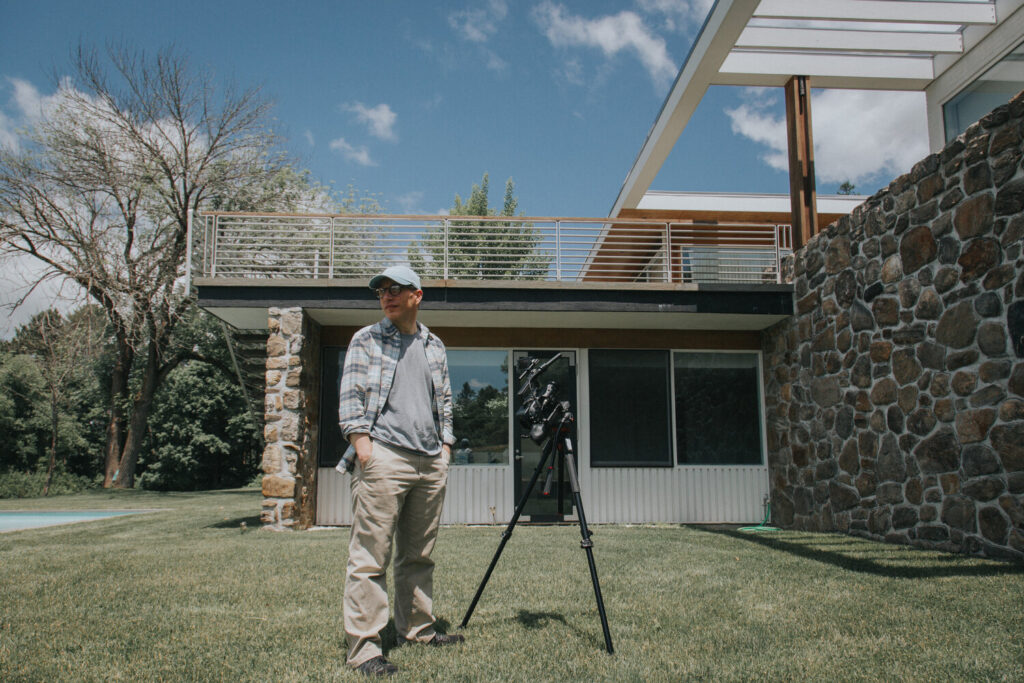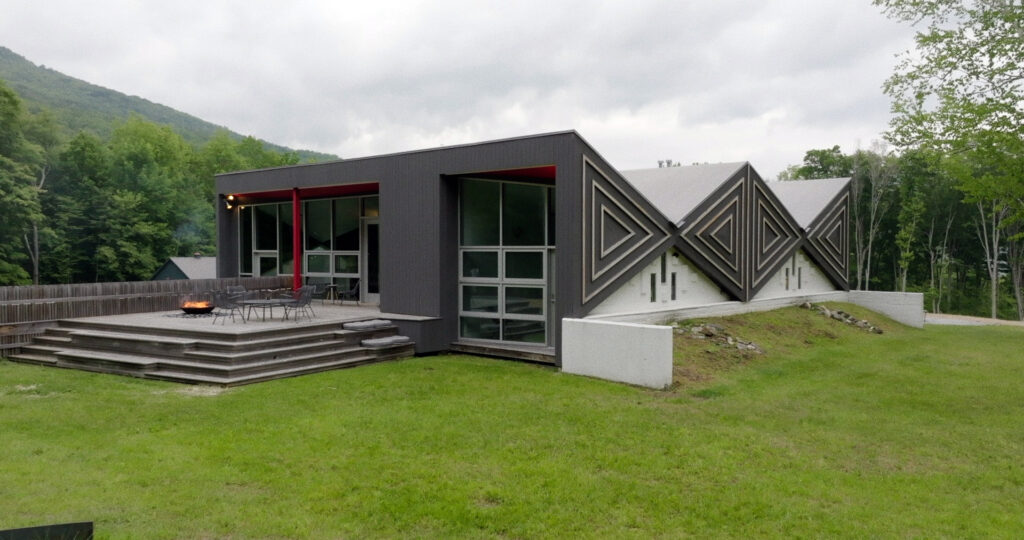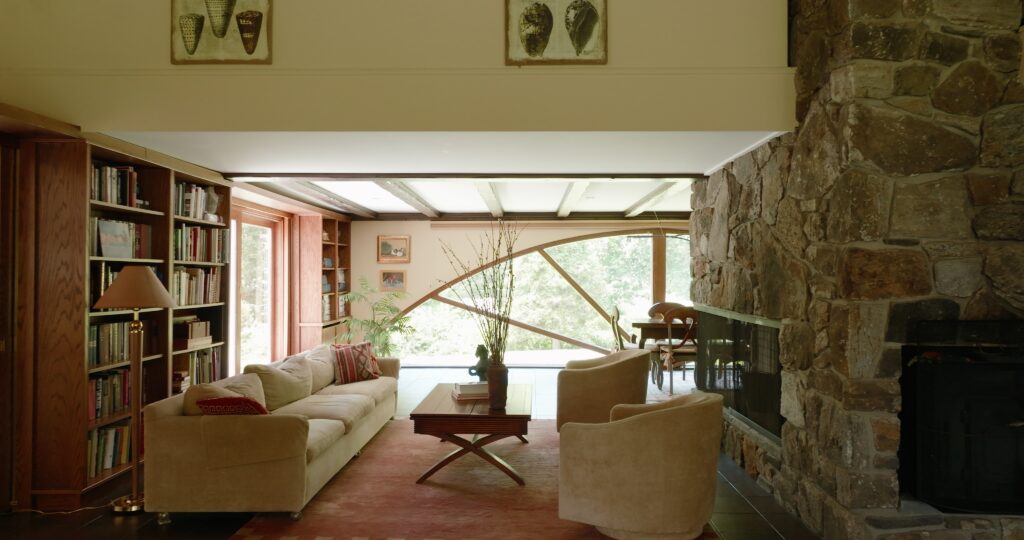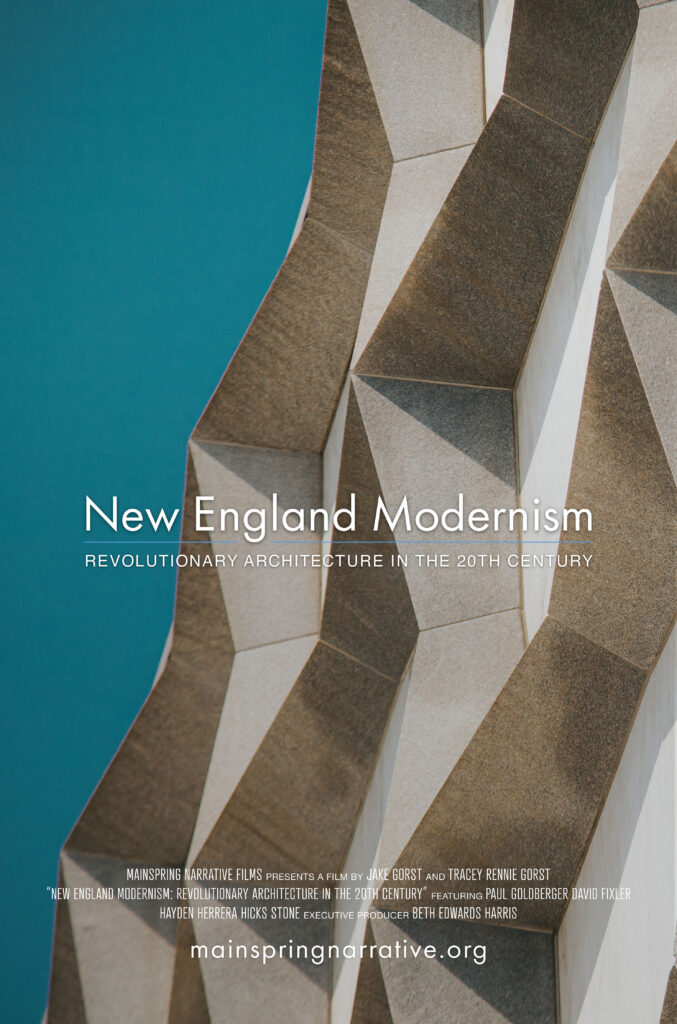
When Emmy award winning husband and wife documentary filmmakers Tracey and Jake Gorst moved to Litchfield, CT in 2017, they could not have imagined that what they would discover would end up inspiring a new passion and subsequent labor-intensive magical project. Producing films focused on architecture was not new to them, however, it was in Litchfield that they discovered a wealth of gems of mid-century houses. They soon realized that it was not just in Litchfield, but also in its surrounding rural towns, such as Derien and New Canaan, and when they began to learn the stories behind those houses and the people who built them, they were hooked. This was the moment that their new documentary, New England Modernism: Revolutionary Architecture in the 20th Century, was born. It is set to be screened at the upcoming Architecture and Design Film Festival (AADF) in New York.
“Modernism,” says architecture photographer Darren Bradley at the beginning of the film, “isn’t a style. It is a language, a philosophy.” While we tend to think of New England as the cradle of American historical architecture—filled with colonial-style and shingle-style houses—the film shows us that its posh, progressive areas came to foster some of the most ambitious and interesting modernist houses to be found in the mid-century years.
However, New England modernism was very different than what was built in Europe by the Fathers of Modern Architecture. Jake Gorst and his guest speakers—a collection of architecture historians, writers, and curators—put emphasis on the fact that New England modernism was not conceding to the local traditional architecture, but rather a continuation of it. The way it is presented in the film is not as radical as we like to think; not as ahistorical as the orthodox International Style, but instead as architecture filled with layers and layers of historical references. The film leads us to identify these references: the courtyard, the brick, the landscape. New England Modernism was not the Bauhaus, suggests one of the speakers is Hicks Stone, the youngest son of starchitect Edward Durell Stone. Many of the architects who created the houses featured in the film followed the ideas of Lloyd Wright who sought to forge a genuine American style with his early Prairie houses and later with his mid-century Usonian houses.
The film provides a brief but relevant background on the complexity of the birth of modern architecture. As the Modern Movement was halted by the Nazis, its main base was shifted to the US. When Walter Gropius, the founder of the Bauhaus, became the Chair of Architecture at Harvard, Modernism was secured. In Harvard, he implemented not only the revolutionary education model established at the Bauhaus, but also made it the dominant practice of progressive and experimental architecture in the US. Those who studied at Harvard under Gropis — Philipe Johnson, IM Pei, Paul Rodolph, etc. — came to shape modern architecture of the mid-century.
To me, the most powerful and surprising aspect of the documentary is the amazing examples of houses that were mostly unknown to me. Do not think of the modest ranch-style houses of the mid-century suburbs, but masterpieces that were built in New England and make you fall in love with this type of architecture—simply beautiful. Some examples are George Howe’s remarkable modernist house Fortune Rock in Mount Desert Island, Maine (1939); David Fried’s Crystal Lake Bath House in Vermont (1942); Wallace K. Harrison’s Anchorage, the house of Nelson Rockefeller in Mount Desert Island, Maine; and Gates and Ford’s Melville Residence in New Canaan, CT (1958), just to name a few of these gems. The role of patrons in the emergence of modern residential architecture is highlighted as well.
There is a lot of information crammed into this lengthy 107-minute film, and I wish it were divided into two separate films that could spend more time exploring the background of corporate mid-century modernism in the US and how it is related to residential architecture. The fact that mid-century modernist residential architecture in New England is not as respected as the historical houses, as in Los Angeles—for example—results in poor preservation. Well, unless you are an architecture fanatic, it is sometime difficult to adjust to living in these houses today when you are in the Northeast of the US. The large windows and floor plans for these often-small-scale homes make mid-century homes unattractive to new buyers. It is their story at their pace. Even Frank Lloyd Wright and Edwad Durell Stone, as shown in the film felt that both the critics and the academics did not respect their work.







